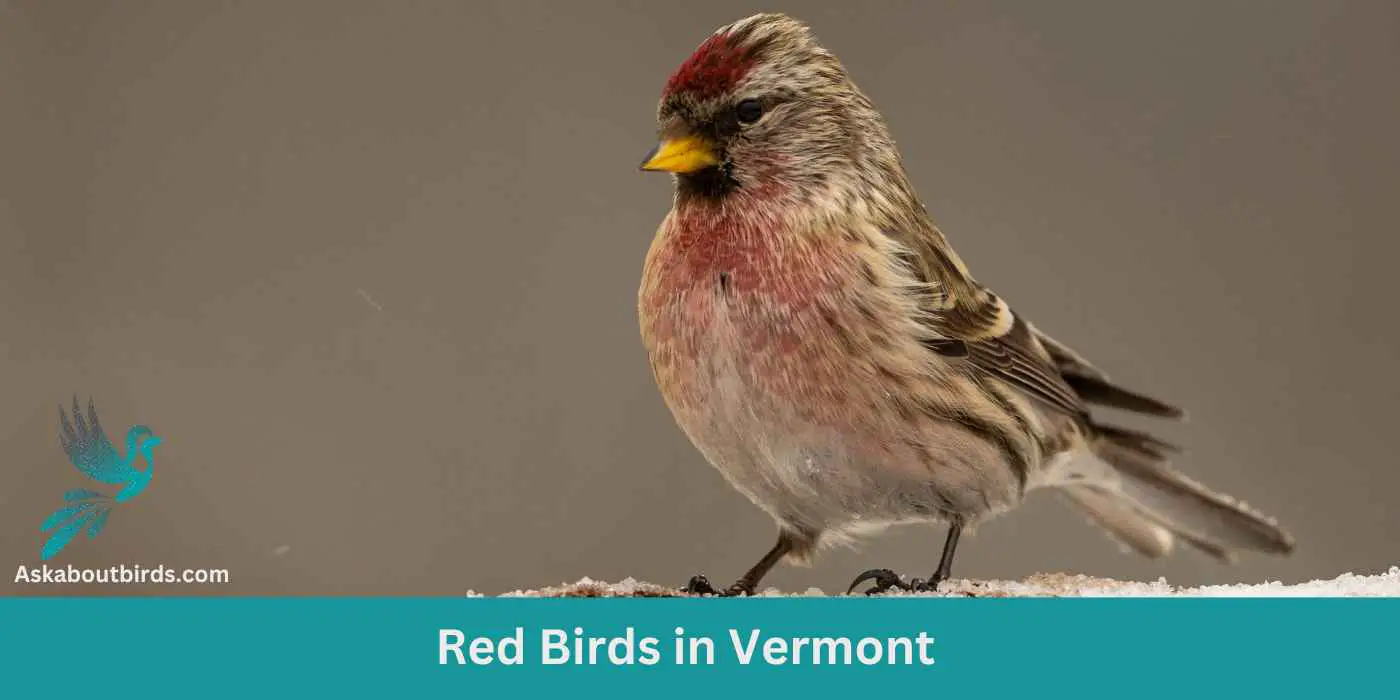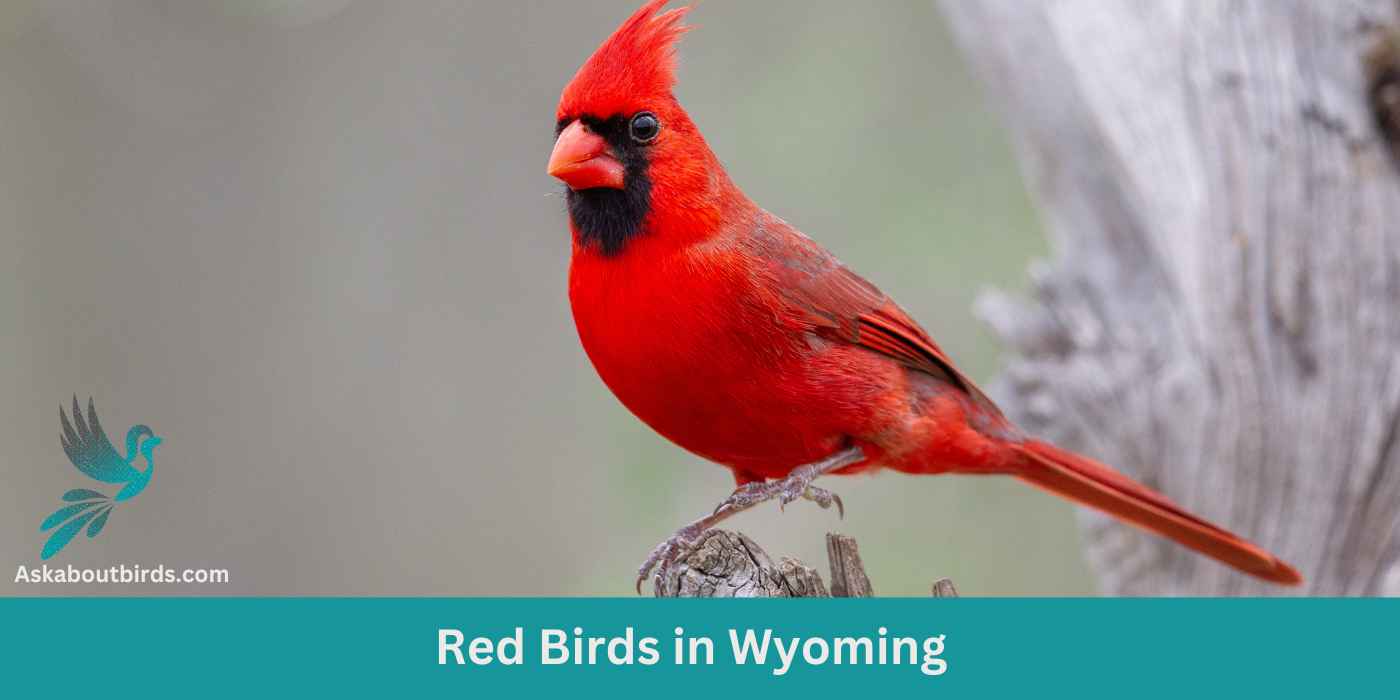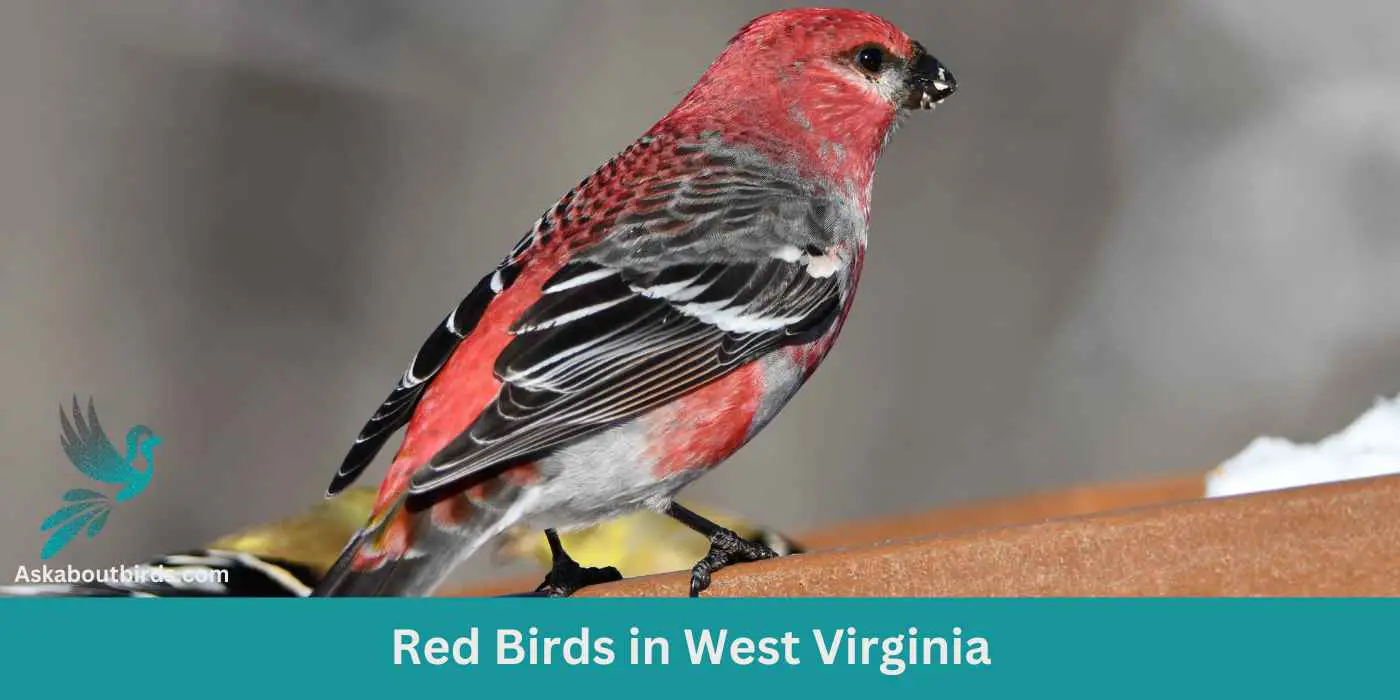Nestled in the heart of New England, Vermont’s lush forests and serene landscapes are a haven for bird enthusiasts. As the seasons change, the state showcases a rich tapestry of avian life, with red birds lending a vibrant splash of color to the verdant backdrop.
Dive into our curated list of 10 exquisite red birds that call Vermont home, and enhance your bird-watching experience with our complimentary photo guide. Let’s embark on this ornithological journey together!
Red Birds Found In Vermont
Nestled in the northeastern part of the United States, Vermont’s unique geographical features offer a diverse range of habitats for avian life. Its dense woodlands, freshwater lakes, and varied elevations cater to both migratory and resident birds.
The changing seasons further enhance the state’s appeal, with each bringing its own set of bird species. The harmonious blend of geography and climate makes Vermont a veritable treasure trove for birdwatchers and nature enthusiasts alike.
Northern Cardinal


| Feature | Measurement |
|---|---|
| Scientific Name | Cardinalis cardinalis |
| Length | 8.3 – 9.1 in |
| Wingspan | 9.8 – 12.2 in |
| Weight | 1.19 – 2.29 oz |
The Northern Cardinal is an iconic North American bird, easily recognized by its vibrant color and melodious song.
Appearance: Male Northern Cardinals are a brilliant scarlet red, while females display a more subdued reddish olive. Both sexes have a distinctive black ‘mask’ on their face around the bill and a pointed crest on their head. The bird’s beak is robust, cone-shaped, and bright orange in color.
Diet: Northern Cardinals are primarily granivorous, with a diet largely consisting of seeds and grains. They also eat fruits and insects. These birds typically feed off the ground and are frequent visitors to bird feeders.
Reproduction: Northern Cardinals are monogamous, and a pair will breed together for life. The female typically builds a well-hidden nest in a dense thicket or shrub. She lays 2-5 eggs per clutch, which she incubates for around two weeks.
Scarlet Tanager


| Feature | Measurement |
|---|---|
| Scientific Name | Piranga olivacea |
| Length | 6.3 to 7.5 in |
| Wingspan | 9.8 to 11.8 in |
| Weight | 23.5 to 38 g |
The Scarlet Tanager is a strikingly colorful bird known for its brilliant plumage and distinctive song.
Appearance: Male Scarlet Tanagers are notable for their vibrant scarlet bodies contrasted with black wings and tail, making them one of the most intensely colored birds. Females and juveniles, on the other hand, have a subdued olive-yellow body color with darker wings and tail.
Diet: The diet of the Scarlet Tanager is largely made up of insects, including beetles, cicadas, aphids, and others. They are adept flycatchers, seizing insects in mid-air or picking them off foliage. They also consume fruits and berries, especially during migration and in their winter habitats.
Reproduction: The female Scarlet Tanager builds a cup-shaped nest using twigs, rootlets, and grass, typically well-hidden in the dense foliage of trees. She lays 3 to 5 eggs and incubates them for about two weeks.
Red-Winged Blackbird
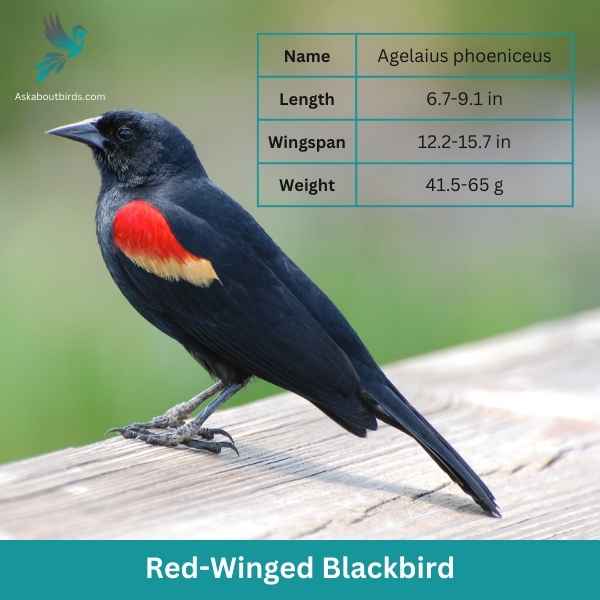
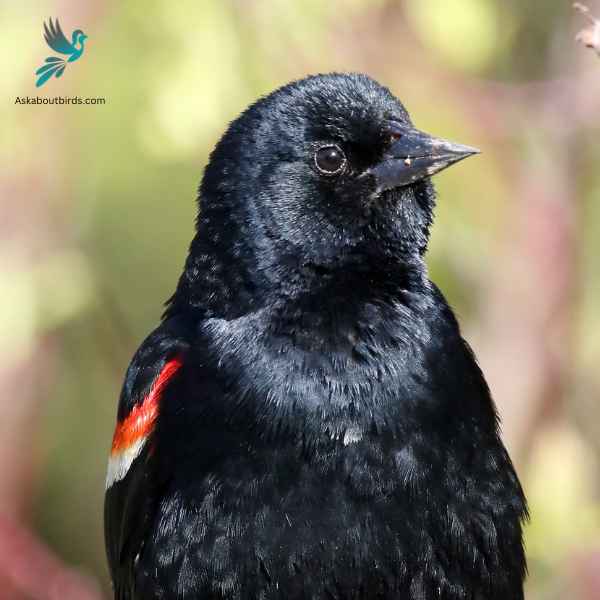
| Feature | Measurement |
|---|---|
| Scientific Name | Agelaius phoeniceus |
| Length | 6.7-9.1 in |
| Wingspan | 12.2-15.7 in |
| Weight | 41.5-65 g |
The Red-Winged Blackbird is a familiar sight across North America, especially in wetlands and open areas. Known for its striking coloration and distinct call, it is often seen perched on cattails or utility lines.
Appearance: Male Red-Winged Blackbirds are glossy black with bright red-and-yellow shoulder patches, while females are streaky brown, resembling a large sparrow. The males’ red patches become more prominent when they’re displaying or agitated.
Diet: Red-Winged Blackbirds primarily feed on seeds and insects. Their diet includes grains, sunflower seeds, and corn, but they also eat beetles, caterpillars, and other small invertebrates, especially in the breeding season.
Reproduction: Red-Winged Blackbirds nest in marshes, along watercourses, and in wet fields. The female constructs a cup-shaped nest using grass and sedge, attaching it to plants above water. She typically lays a clutch of 3 to 4 blue-green eggs, which she incubates for about 11-12 days. Males, being polygynous, often have multiple mates during a single breeding season.
American Redstart


| Feature | Measurement |
|---|---|
| Scientific Name | Setophaga ruticilla |
| Length | 4.3 to 5.5 in |
| Wingspan | 6.3 to 9.1 in |
| Weight | 8.6 g |
The American Redstart is a lively warbler known for its vivid colors and active hunting style, often seen flitting about, fanning its tail to startle and catch insects.
Appearance: Adult male American Redstarts boast striking black plumage with bright orange patches on the sides, wings, and tail. Females and immature males have grayish-olive upperparts with yellow patches in the same areas where the males display orange.
Diet: American Redstarts are primarily insectivores. They actively forage for flying insects, as well as caterpillars and spiders, often using their colorful tails to startle prey and make them easier to catch.
Reproduction: The female American Redstart builds a cup-shaped nest in the fork of a tree branch. Typically, she lays a clutch of 3 to 5 eggs. The female takes on the primary responsibility of incubating the eggs, while both parents participate in feeding the fledglings after they hatch.
House Finch


| Feature | Measurement |
|---|---|
| Scientific Name | Haemorhous mexicanus |
| Length | 5–6 in |
| Wingspan | 8–10 in |
| Weight | 0.6–0.9 oz |
The House Finch is a small songbird widely distributed across North America and is commonly found in urban and suburban areas.
Appearance: Males of this species are brightly colored with crimson faces and throats, which can extend to the chest and back, while their flanks have streaks. The female is streaked brown and lacks the red coloring. Both have a square-tipped tail and a distinctively long, flat-topped bill.
Diet: House Finches primarily eat seeds, grains, and berries. They have a particular fondness for sunflower seeds and can be commonly seen at bird feeders. Occasionally, they will also consume insects, especially during the breeding season.
Reproduction: House Finches are cavity-nesters and might choose ledges, vents, ledges, and other urban settings. They might also utilize trees or shrubs. Their nests can be made of a wide array of materials, from feathers to twigs.
Purple Finch


| Feature | Measurement |
|---|---|
| Scientific Name | Haemorhous purpureus |
| Length | 4.7–6.3 in |
| Wingspan | 4.7–6.3 in |
| Weight | 0.6–1.1 oz |
The Purple Finch is a vibrant songbird often mistaken for its close relative, the House Finch, but it exhibits a different hue and patterns.
Appearance: Males are raspberry red on the head, throat, and breast, with streaky brown backs and wings. The intensity of the red can vary among individuals. Females are brown and streaked all over but might show a slight blush on the face. They lack the strong facial patterns seen in female House Finches.
Diet: Purple Finches primarily consume seeds, with a preference for sunflower seeds, dandelion seeds, and buds. They also eat insects and berries, especially during the breeding season.
Reproduction: These finches often nest in conifers or mixed woodlands. The nest, typically located on a horizontal branch, is made from twigs and grass, then lined with feathers.
Common Redpoll

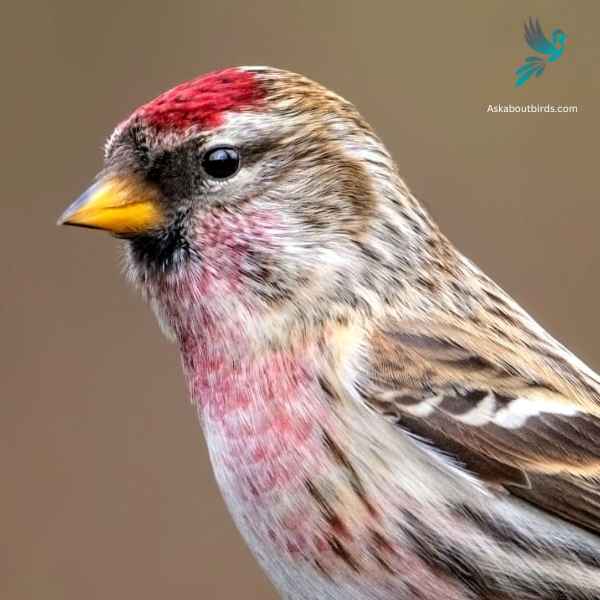
| Feature | Measurement |
|---|---|
| Scientific Name | Acanthis flammea |
| Length | 5.0-5.5 in |
| Wingspan | 7.5-8.5 in |
| Weight | 0.4-0.9 oz |
The Common Redpoll is a small songbird that is easily identifiable by its rosy-red forehead, black chin, and often fluttering flight pattern.
Appearance: Common Redpolls exhibit a distinctive rosy-red forehead patch and black chin. The males typically have a more extensive pink wash on their chest and face than females. The rest of their body is primarily streaked brown and white, with two white wing bars and a notched tail.
Diet: The diet of the Common Redpoll predominantly consists of seeds, particularly from birches and alders. They have a specialized throat pouch where they can temporarily store seeds, allowing them to consume them later in a more sheltered location.
Reproduction: Common Redpolls nest in shrubs or on the ground, using grasses, twigs, and feathers for construction. The female is responsible for the majority of the incubation and typically lays a clutch of 4 to 6 eggs. After the eggs hatch, both parents take part in feeding the young.
Pine Grosbeak

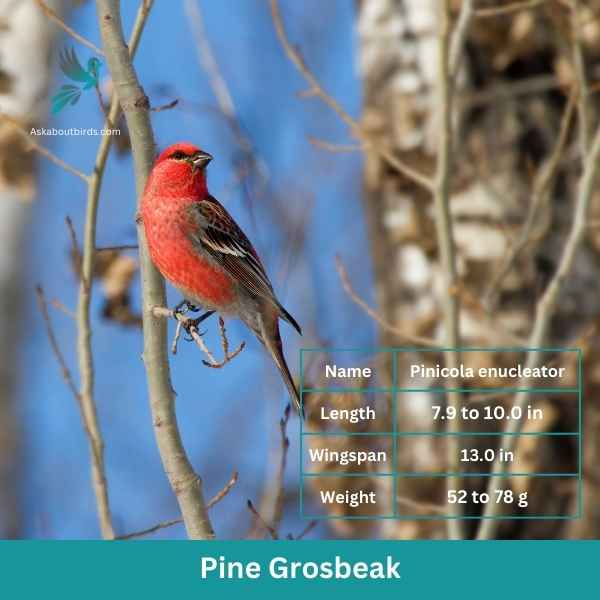
| Feature | Measurement |
|---|---|
| Scientific Name | Pinicola enucleator |
| Length | 7.9 to 10.0 in |
| Wingspan | 13.0 in |
| Weight | 52 to 78 g |
The Pine Grosbeak is a striking bird native to the northern regions of North America, often found in coniferous forests. Both males and females have a plump and robust body with a large beak adapted for eating seeds. The male Pine Grosbeak displays a vibrant reddish-pink plumage, while the female has a more subdued grayish-brown coloration.
These birds are typically seen in small flocks, foraging for food in trees and on the ground. They have a preference for seeds, particularly those from various conifer species. The Pine Grosbeak uses its strong bill to crack open the cones of tall trees and extract the seeds, but they also consume berries and small fruits when available.
Red Crossbill

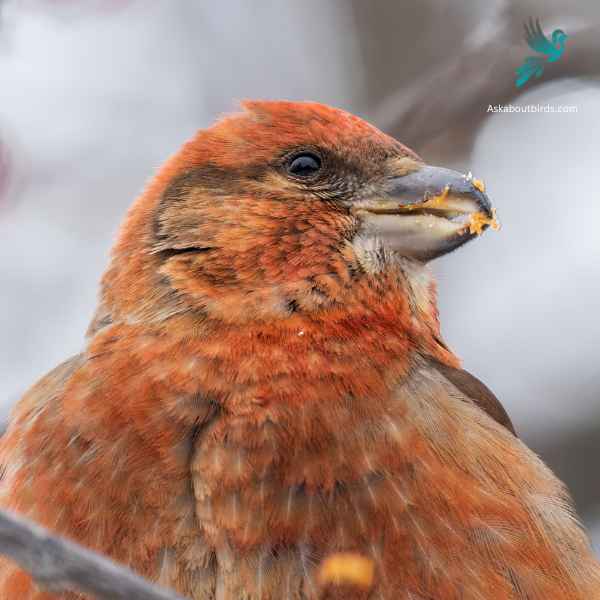
| Feature | Measurement |
|---|---|
| Scientific Name | Loxia curvirostra |
| Length | 5.5–7.5 in |
| Wingspan | 9.8–10.6 in |
| Weight | 0.9–1.4 oz |
The Red Crossbill is a distinctive finch known for its unusual bill, which has evolved to extract seeds from conifer cones.
Appearance: Males are typically bright red or orange, while females are greenish-yellow or olive. Both genders have the characteristic crossed bill, which they use to expertly extract seeds from tightly closed conifer cones.
Diet: Red Crossbills primarily feed on the seeds of coniferous trees, such as spruce, pine, and fir. Their specialized bills allow them to efficiently pry apart conifer cone scales to access the seeds.
Reproduction: Red Crossbills are somewhat nomadic and don’t adhere to a strict breeding schedule. Instead, they breed whenever and wherever food is abundant. Their nests are usually built on horizontal branches of conifer trees.
Rose-breasted Grosbeak
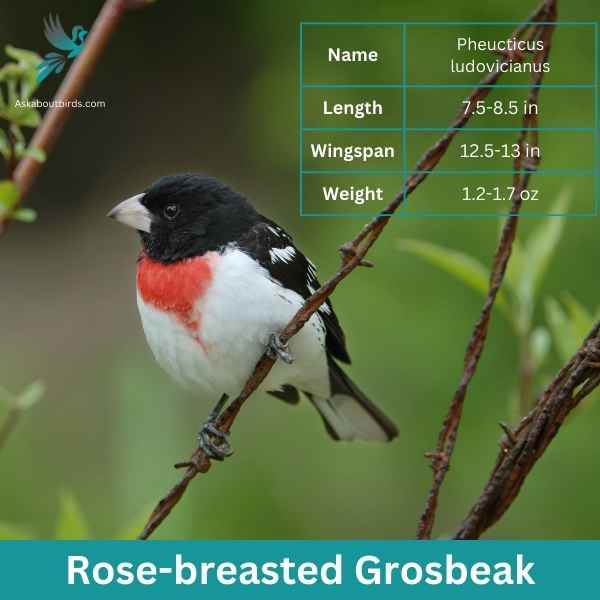

| Feature | Measurement |
|---|---|
| Scientific Name | Pheucticus ludovicianus |
| Length | 7.5-8.5 in |
| Wingspan | 12.5-13 in |
| Weight | 1.2-1.7 oz |
The Rose-breasted Grosbeak is a songbird of medium size, widely recognized for its vibrant coloration and melodious song.
Appearance: Male Rose-breasted Grosbeaks boast a striking contrast with black and white plumage accompanied by a radiant rose-colored patch on the chest and under the wings. In contrast, females exhibit streaked brown and white plumage, resembling large sparrows but with a thick bill.
Diet: The diet of the Rose-breasted Grosbeak consists of a mixture of seeds, insects, and fruits. During summer, they primarily feed on insects, while seeds and fruits become more prevalent in their diet during the colder months.
Reproduction: These birds build cup-shaped nests typically situated in trees or large shrubs. Both the male and female partake in incubation duties, ensuring the eggs’ safety and warmth. After hatching, the chicks are primarily fed insects.
Where to Spot Vermont’s Red Birds
Vermont, with its picturesque landscapes and diverse ecosystems, has long been a sanctuary for an array of bird species.
- Dead Creek Wildlife Management Area, Addison: Situated in the Champlain Valley, this area is renowned for its migratory bird populations, especially during the fall. Snow geese are a highlight, but red bird aficionados can also find many of their favorites here.
- Missisquoi National Wildlife Refuge, Swanton: Nestled near the shores of Lake Champlain, this refuge provides crucial habitat for over 200 bird species. Its diverse ecosystems, from wetlands to forests, attract a myriad of red birds throughout the year.
- Green Mountain National Forest: Spanning a vast area, this national forest offers dense woodlands and high-altitude habitats. It’s a prime location for spotting various woodland bird species, including several red birds, against a backdrop of stunning mountain vistas.
- Lake Bomoseen State Park, Castleton: The largest lake entirely within Vermont’s boundaries, Lake Bomoseen is surrounded by forests and marshes. Its diverse habitats make it a hotspot for both aquatic and woodland birds, ensuring a rewarding birdwatching experience.
- Mud Creek, Alburg: A hidden gem in the northernmost part of the state, Mud Creek is a haven for marsh and water birds. During migration seasons, the area teems with activity, making it a must-visit for any birdwatching enthusiast in Vermont.
| State’s Red Birds | Top Birdwatching Spots |
|---|---|
| New Hampshire’s Red birds | 1. Great Bay National Wildlife Refuge 2. White Mountains 3. Pawtuckaway State Park |
| New York’s Red birds | 1. Central Park, New York City 2. Adirondack Mountains 3. Montezuma National Wildlife Refuge |
| Massachusetts’ Red birds | 1. Plum Island – Parker River National Wildlife 2. Quabbin Reservoir 3. Cape Cod National Seashore |
FAQs on Red Bird Species Found in Vermont
Why are black oil sunflower seeds popular for backyard feeders?
Black oil sunflower seeds are a favorite among bird enthusiasts for backyard feeders, especially in the eastern and southern states. Their popularity stems from their high nutritional content which attracts a diverse range of birds. Yellow birds, vibrant red birds, and even those with dark gray wings or bright blue heads frequently visit feeders stocked with these seeds. Moreover, these seeds have a thinner shell, making them easily accessible for birds like the common house finch and the ruby throated hummingbird.
How do black oil sunflower seeds benefit forest birds?
Forest birds, especially those dwelling in the forest canopy and forest edges of central and southern America, rely heavily on a varied diet. Black oil sunflower seeds, packed with essential nutrients, offer an energy-rich supplement, especially for year-round residents. Birds with green wings, those with dull orange heads, and even vibrant red birds like the male scarlet tanager, are often spotted relishing these seeds in forest habitats.
What’s the difference between black oil sunflower seeds and conifer seeds for birds?
Black oil sunflower seeds and conifer seeds cater to different bird species. While the former attracts a broad spectrum of birds, including those from the northern and western states, the latter is particularly favored by birds like white-winged crossbills. Conifer seeds, found in evergreen forests, are typically consumed by birds adapted to extract them, such as male pine grosbeaks with their specialized bills.
How can one attract diverse birds using black oil sunflower seeds?
To lure a variety of birds, including those with red plumage, bright blue heads, or even those with a more common house finch appearance, stocking backyard feeders with black oil sunflower seeds is effective. Placing these feeders near forest edges, shade trees, or dense vegetation can also attract birds from both the woodland edges and eastern forests. For an added attraction, planting berry plants and fruit trees nearby can entice species like the painted bunting and ruby-throated hummingbirds.

